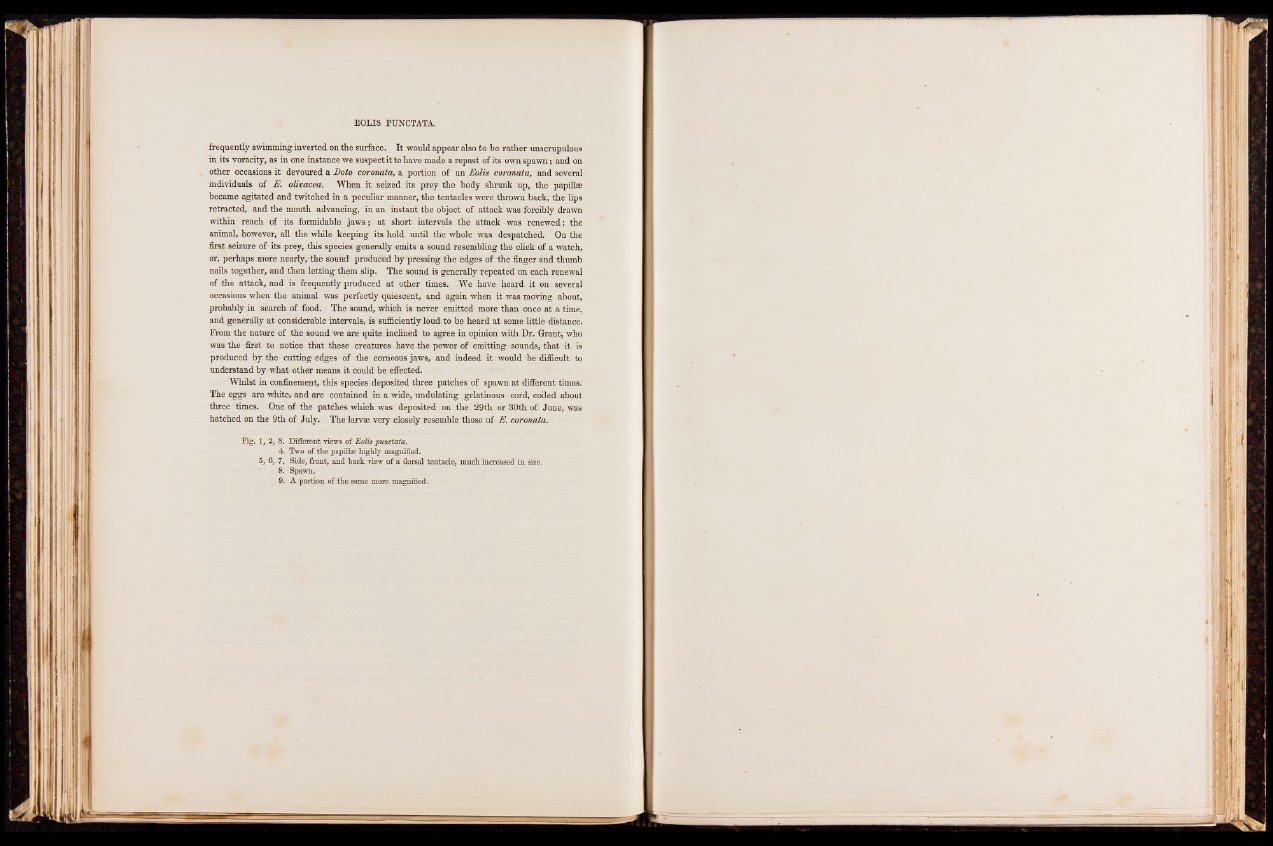
frequently swimming inverted on the surface. It would appear also to be rather unscrupulous
in its voracity, as in one instance we suspect it to have made a repast of its own spawn; and on
other occasions it devoured a Doto coronata, a portion of an Eolis coronata, and several
individuals of E. olivacea. When it seized its prey the body shrunk up, the papillae
became agitated and twitched in a peculiar manner, the tentacles were thrown back, the lips
retracted, and the mouth advancing, in an instant the object of attack was forcibly drawn
within reach of its formidable jaws; at short intervals the attack was renewed; the
animal, however, all the while keeping its hold until the whole was despatched. On the
first seizure of its prey, this species generally emits a sound resembling the click of a watch,
or, perhaps more nearly, the sound produced by pressing the edges of the finger and thumb
nails together, and then letting them slip. The sound is generally repeated on each renewal
of the attack, and is frequently produced at other times. We have heard it on several
occasions when the animal was perfectly quiescent, and again when it was moving about,
probably in search of food. The sound, which is never emitted more than once at a time,
and generally at considerable intervals, is sufficiently loud to be heard at some little distance.
From the nature of the sound we are quite inclined to agree in opinion with Dr. Grant, who
was the first to notice that these creatures have the power of emitting sounds, that it is
produced by the cutting edges of the corneous jaws, and indeed it would be difficult to
understand by what other means it could be effected.
Whilst in confinement, this species deposited three patches of spawn at different times.
The eggs are white, and are contained in a wide, undulating gelatinous cord, coiled about
three times. One of the patches which was deposited on the 29th or 30th of June, was
hatched on the 9th of July. The larvae very closely resemble those of E. coronata.
Fig. 1, 2,
5, 6,
8.
4.
7.
8. 9.
Different views of Eolis punctata.
Two of the papillae highly magnified.
Side, front, and back view of a dorsal tentacle, much increased in size.
Spawn.
A portion of the same more magnified.